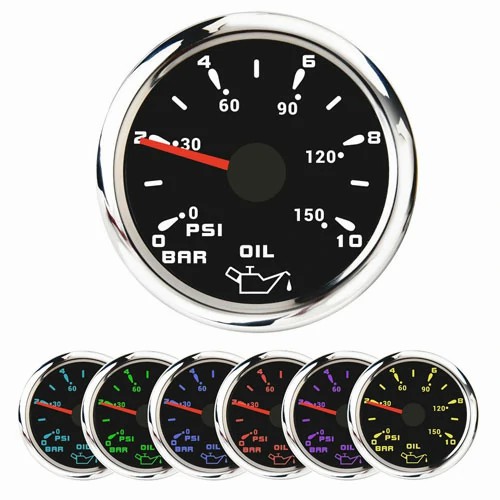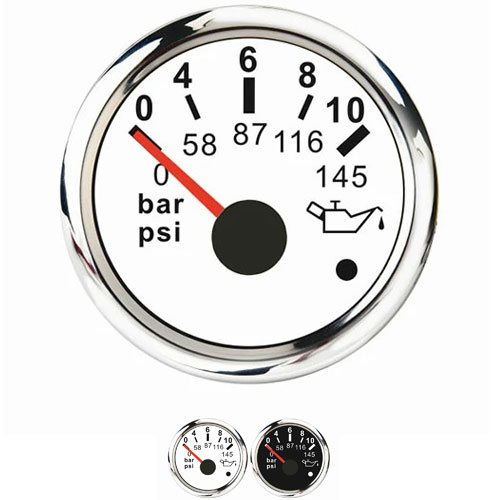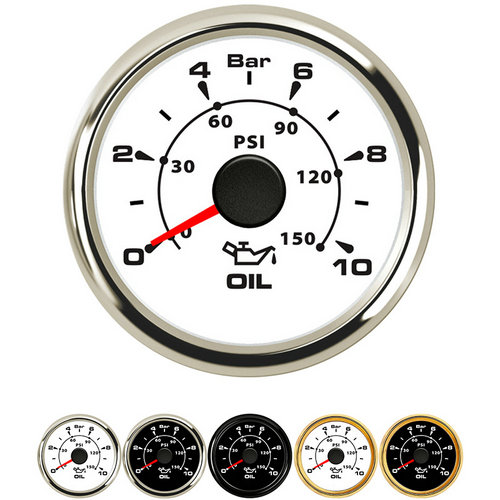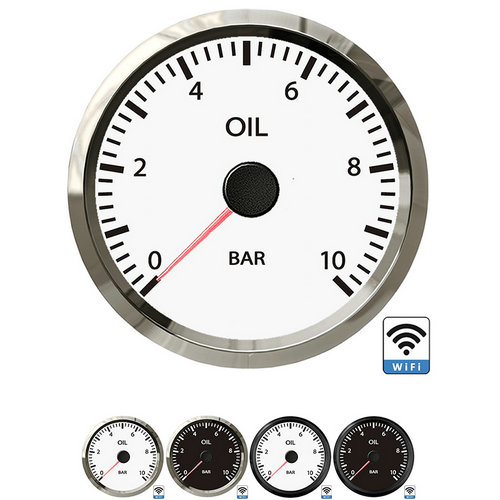oil pressure gauge maxed out
Oil pressure gauge maxed out means:
1. Insufficient engine oil, resulting in a decrease in the amount of oil pumped by the oil pump or failure to pump oil due to air intake, resulting in a decrease in engine oil pressure;
2. If the engine temperature is too high, it is easy for the oil to become thinner, causing a large amount of loss from the fit gap and resulting in a decrease in oil pressure;
3. When the oil pump components are damaged or the gap is too large due to wear, assembly, and other issues, it will cause the oil pump to not produce oil or to produce insufficient oil;
4. Improper fit clearance between the crankshaft and the large and small bearings. If it is too tight, it will increase the oil pressure, while if it is too loose, it will decrease the oil pressure;
5. Blockage of oil filter and suction pan will also reduce engine oil pressure;
6. Damaged or malfunctioning return valve: If the spring of the return valve in the main oil duct is fatigued, softened or improperly adjusted, the mating surface between the valve seat and the steel ball is worn or jammed by dirt, resulting in loose closure, the return oil volume will significantly increase, and the oil pressure in the main oil duct will also decrease;
7. Improper selection of engine oil: If used incorrectly or with an incorrect brand, the engine may experience increased leakage due to the low viscosity of the oil, resulting in a decrease in oil pressure;
8. There is oil leakage or blockage in the oil pipeline.
The first step is to enter the regulator, where you first need to reduce the pressure on the fuel system. You can complete this task by removing the fuel cap and fuel pump relay. Then start the car, it will run for a short period of time and then stop. Now you need to clear a path so that you can access your fuel pressure regulator. This is the part with the greatest difference between different models, and your adjuster may be easier or more difficult to achieve. Remove your main wiring harness electrical control, and then remove the wiring harness itself. Disconnect the engine coolant temperature electrical connector and the air pressure sensor electrical connector.
Step 2, disconnect the glow plug and fuel rail temperature sensor connector. Now remove the left fuel injector electrical connector, followed by the fuel pressure regulator connector. Remove the oil level sensor wiring harness and hose, remove the injection pump inlet hose, and move it away. The second step is to clean the area. Before disassembling the fuel pressure regulator, the entire area needs to be cleaned with solvent. Check your vehicle manual and recommend solvents for your vehicle. Make sure to clean the regulator itself and any connectors. High pressure injection pump, as well as any pipelines entering and exiting the regulator. After cleaning everything with solvent, you should use compressed air to completely dry the entire area.
Step 3, install a new regulator. You will need to install a new O-ring along with your new fuel pressure regulator. You need to lubricate the O-rings with new engine oil and then install them. Now, you can install your new fuel pressure regulator and replace the screws or bolts. Then follow the instructions below to reverse the operation and replace the hoses, wiring, connectors, and main wiring harness. Once everything is back together, re pressurize the fuel system by turning on the ignition and turning it off several times.
 English
English 






Get a Quote / Info